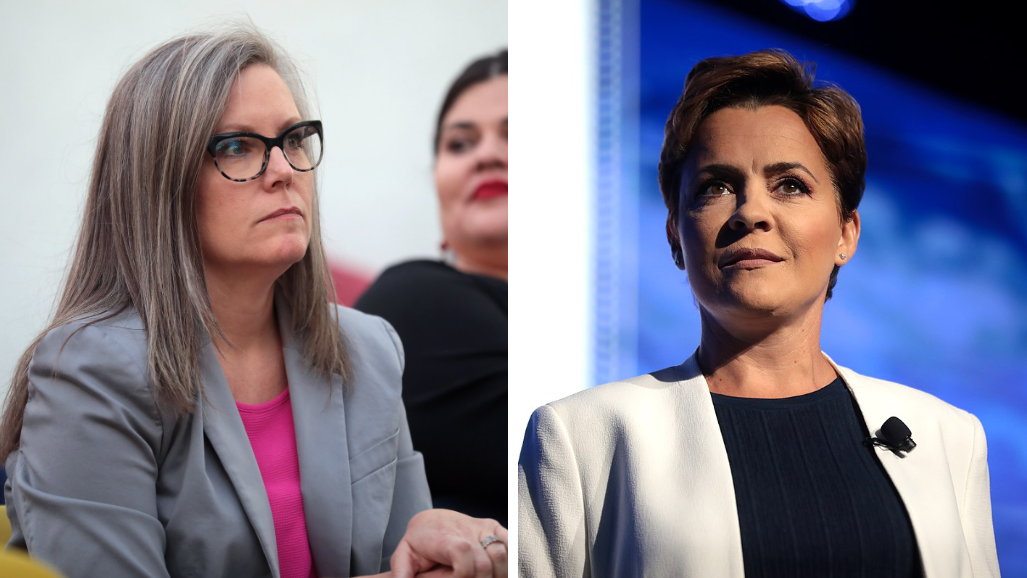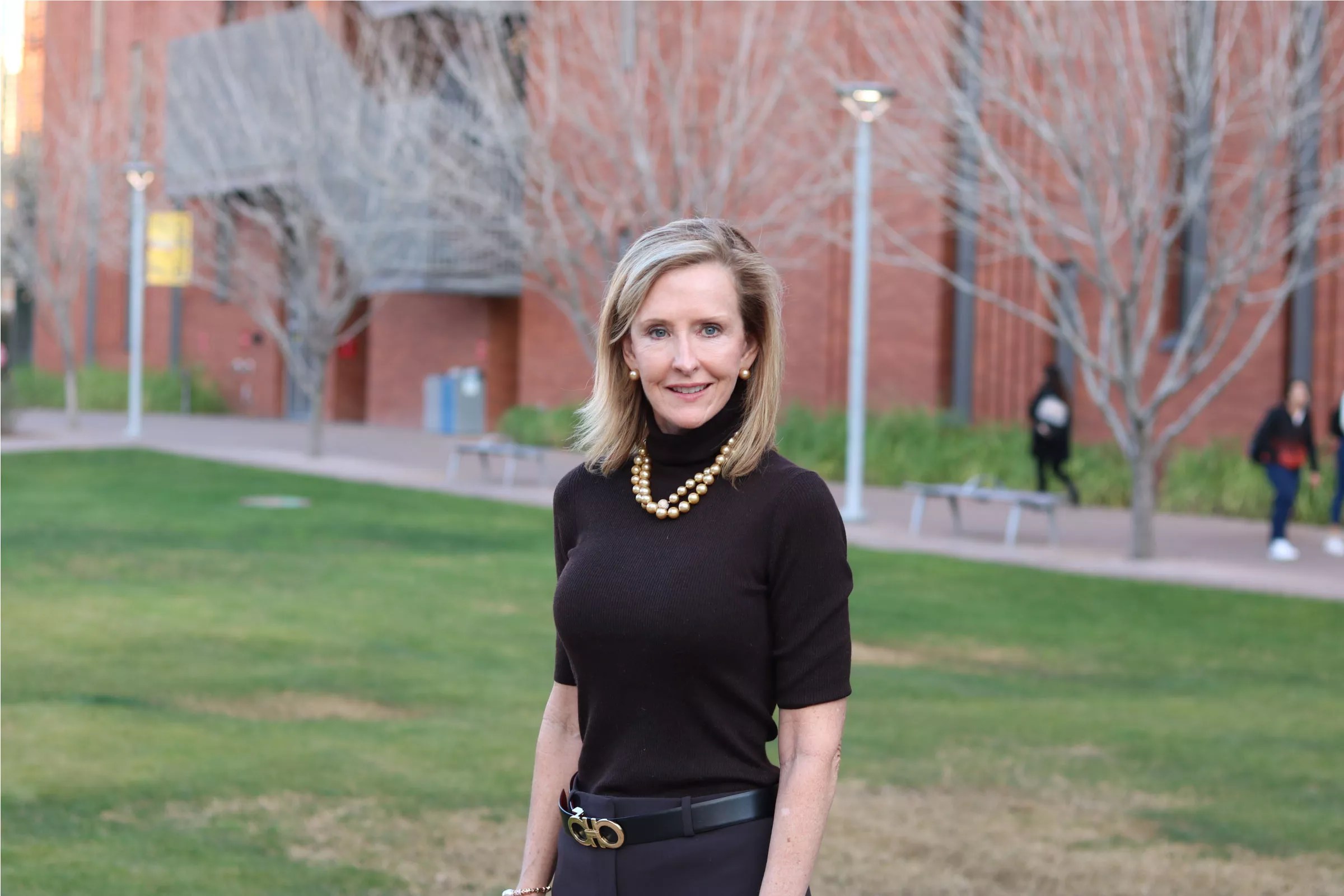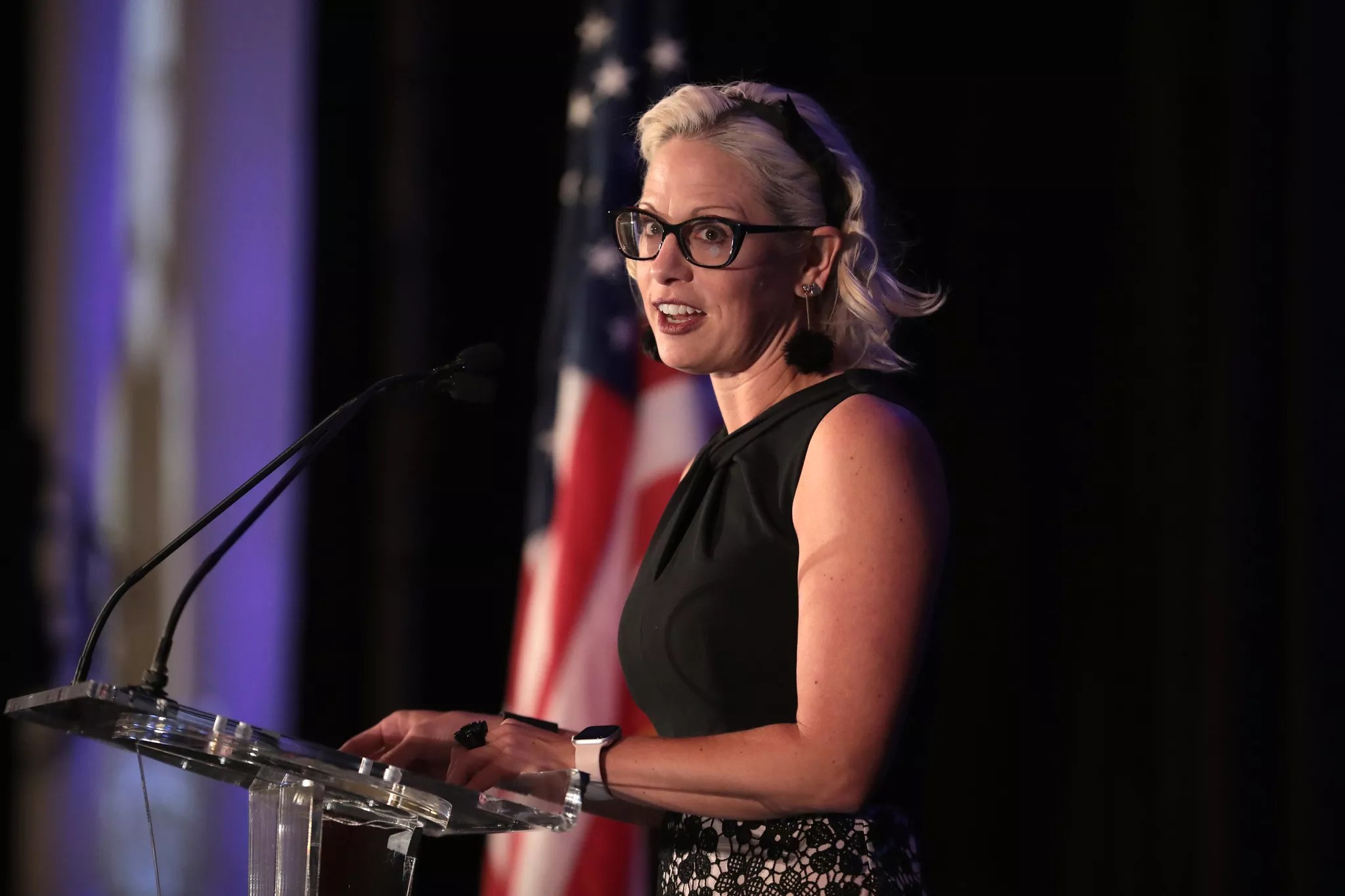
Gage Skidmore/Creative Commons

Audio By Carbonatix
Democrat Katie Hobbs and Republican Kari Lake are duking it out to become Arizona’s next governor, marking the first time two women have competed for the job in a general election.
Sure, the winner is poised to become Arizona’s fifth female chief executive, which outpaces any other state. But she’ll only be the second actually taking the job by first being elected to the office. The other three women became governor when their predecessors left prematurely.
Rose Mofford, a Democrat, served as the first female head of state from 1988 to 1991 after Governor Evan Mecham was impeached for obstructing justice and misusing government funds. As secretary of state, Mofford inherited the role.
So was the case with Republican Secretaries of State Jane Dee Hull, who became governor in 1997 following Governor Fife Symington’s convictions of extortion and bank fraud, and Jan Brewer, who took office in 2009 after Governor Janet Napolitano resigned to become President Barack Obama’s secretary of homeland security. Napolitano, a Democrat, is the only woman to ever be elected governor without first having served the remaining term of their predecessor – at least until November 8.
Phoenix, make your New Year’s Resolution Count!
We’re $11,000 away from reaching our $30,000 year-end fundraising goal. Your support could be what pushes us over the top. If our work has kept you informed, helped you understand a complex issue, or better connected you to your community, please consider making a contribution today.

Janet Napolitano, a Democrat, was the first woman to take office as governor by winning an election. The state’s four other female governors took office after the sitting governor resigned or was impeached.
Gage Skidmore/Creative Commons
A History of Sexism?
If voters approve, a November ballot initiative would create the new position of lieutenant governor of Arizona. But because the state has never had a lieutenant governor, the secretary of state is first in the line of succession to fill the governor’s office.
Women have occupied the secretary of state office in Arizona for 34 of the last 44 years. Hobbs has held the position since 2019.
Experts aren’t quite sure why this is the case. Some speculate that, like the dearth of women in the governor’s office, it’s linked to a history of sexism.
Voters didn’t deign to put a woman in charge of the state, but they felt safe placing one in the second-most powerful position, a role that deals with more “empathetic and compassionate” issues, such as registering charities. That’s according to Kim Fridkin, a political science professor at Arizona State University who works with the school’s Women and Politics Group Working Group.
By all accounts, Arizona is an ideal domain for women in politics – as long as you leave being elected to the governor’s office out of the conversation. According to The Center for American Women and Politics, Arizona ranks No. 5 in the country in that regard, with women holding 41 percent of elected offices in the state. The state’s superintendent of public instruction has been a particularly popular office for women to hold, Fridkin noted.
The governor’s race this year hints that things are improving for women in politics. Lake’s fiercest competitor in the Republican primary election in August was a woman – former Arizona Board of Regents member Karin Taylor Robson.
“This is the culmination of women growing in power in Arizona,” Fridkin told Phoenix New Times. “This is a pattern that is going to continue.”
Even though Lake and Taylor Robson don’t have much political experience, at the aggregate level, women are viewed as increasingly viable candidates, Fridkin said.

In a tight contest involving three female candidates, Karin Taylor Robson fell to Kari Lake in the Republican primary for Arizona governor in August.
Arizona State University
‘Cultural Tradition’
Arizona’s female governors have become role models who play a prominent part in people’s view of politics in Arizona, Fridkin added. “Because women have achieved these high-ranking offices, regardless of how they got them, there is this perception among the public and among political elites that women can run and win,” she said.
She also pointed to the correlation between Western states and women’s success in political office, which is tied to the rugged individualism that was brought about by westward expansion. “There is something cultural about the West,” Fridkin said. “Women gained the right to vote in Western states a lot earlier than in Eastern states. There is a cultural tradition in states like Arizona for women to have more political power.”
That wasn’t always the case.
Female candidates have been historically underfunded in Arizona. Then and now, they’ve had to battle not only their political adversaries but also sexist stereotypes. In the eyes of voters, women are perceived as being less competent leaders than their male counterparts, Fridkin said.
Democratic women are seen as more extreme on the liberal continuum, while Republican women are seen as more moderate “compared to an identical man,” she said. “Those stereotypes still exist.”

The 2018 midterm election saw two women, then-incumbent Republican Martha McSally and eventual victor Kyrsten Sinema, compete for a U.S. Senate seat in Arizona.
Political Toss-Up
The 2018 midterm election saw two women, then-incumbent Republican Martha McSally and eventual victor Kyrsten Sinema, compete for a U.S. Senate seat in Arizona. McSally tried to paint Sinema as being too liberal, though Sinema is now widely smeared as a “fake Democrat” for not being liberal enough.
McSally’s “main critique” of her opponent, Fridkin said, was that “she was out of touch with Arizonans because she had this extremely far-left record. That just reinforced those gender stereotypes.”
Hobbs and Lake are virtually tied heading into the final weeks of the campaign, according to FiveThirtyEight. Other pollsters such as Politico forecast a toss-up, especially after Hobbs refused to debate Lake even once ahead of the election.
“Katie Hobbs not debating Kari Lake is something that I wouldn’t have advised her to do,” Fridkin said. “People don’t really know much about her. It’s odd to me that she did that.”
Among women governors in the state, there have been two Democrats and two Republicans. Who’s going to break the tie on November 8?